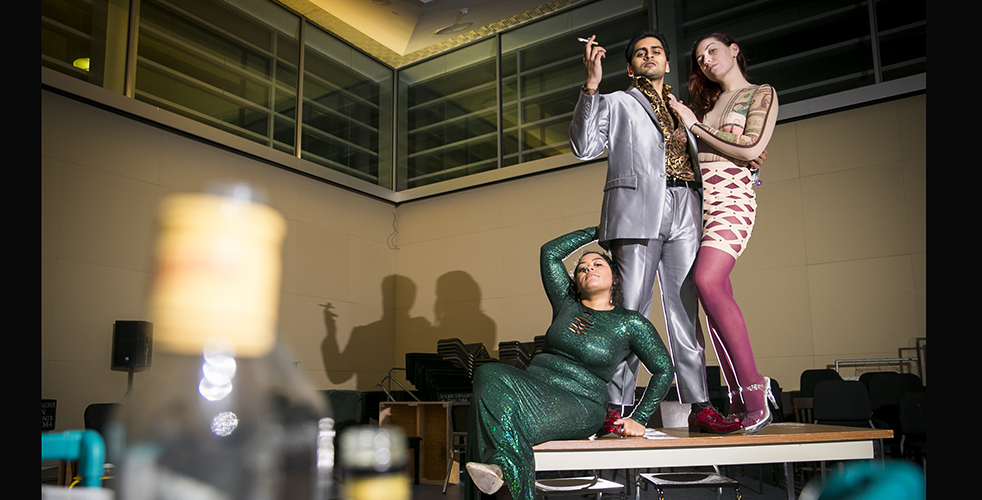
The lights go down. The curtain goes up. The orchestra strikes a chord and sets the tone for the night ahead. So begins your standard opera – but, as its audience soon finds out, “The Beggar’s Opera” is not a standard performance.
The intimacy and close proximity afforded by the Black Box Theater, a fittingly nontraditional space for Hofstra Opera Theater necessitated by renovations to the John Cranford Adams Playhouse, allowed this cast and creative team to truly shine, using every inch of the smaller space to maximize the impact of every lyric and detail of choreography in the show.
The creative team, under the direction of Isabel Milenski, artistic and stage director, utilized the space to its fullest potential, employing the theater’s mezzanine catwalk as an extension of the stage to host the chorus members for the larger scenes.
A cast featuring veterans to the Hofstra opera stage and newbies alike, these actors seemed to embrace the strange nature of the show and accentuate it, modernizing the otherwise classical show with present-day accoutrements such as cell phones and wardrobe choices.
The opera opened with an enthusiastic invitation from the narrator, The Beggar (Alex Della Ratta), for the crowd to enjoy the show. This shattering of the fourth wall from the very beginning was an indicator of the nonstandard show about to unfold.
The palpable energy of this cast could be felt right from Della Ratta’s entrance and was certainly carried on through the performances of Mr. Peachum (Nevin Shah) and Mrs. Peachum (Colleen McKeown), as well as Peachum’s right hand man, Filch (Richard Kihm), and Lockit (Michael Fernandez).
While the whole cast delivered strong performances encapsulating the satirical nature of the original opera and entertaining the sold out audience, it was the trio of performances in the love triangle of Polly Peachum (Sydney Coelho), Captain Macheath (Alex Herron) and Lucy Lockit (Kristina Shafranski) that truly stole the show.
Synthesizing their tools, including their experience in Hofstra Opera Theater, musical training at the university and natural stage presence and musicianship, Coelho, Herron and Shafranski commanded the stage with an unwavering confidence that brought their characters to life and left no room for doubting their strength as performers. The whole cast was certainly capable of delivering strong vocal performances, but these three stood out for their vocal chops. Herron’s rich tenor voice, particularly when coupled with the silky soprano lines that Coelho delivered all night, carried far above the orchestra and filled the theater with a familiar warmth.
Their voices seemed to guide the audience through the perilous tale of a highwayman, Macheath, caught in a love triangle, who ultimately finds himself in a compromising position on death row and whose passing would benefit the fathers of both girls with whom he finds himself entwined. The story follows the Peachum and Lockit families, and ultimately ends with The Beggar breaking the fourth wall once more to inform the audience that although a moral story would end in Macheath’s death, the townspeople demand a happy ending in which his life is spared. A final song and dance reprise wraps up the story and the trio rides off into the sunset with Macheath living to fight again.
It requires true talent and creative vision to take a nonstandard opera such as this one, couple it with an unusual stage and produce something that seems so natural and entertaining.
Hofstra Opera Theater’s production of “The Beggar’s Opera” has managed to do just that, satisfying three sold out audiences with a spectacular showing of talent and command across the entire cast. Strong performances all around contributed to a show that left audiences – fittingly – begging for more.

